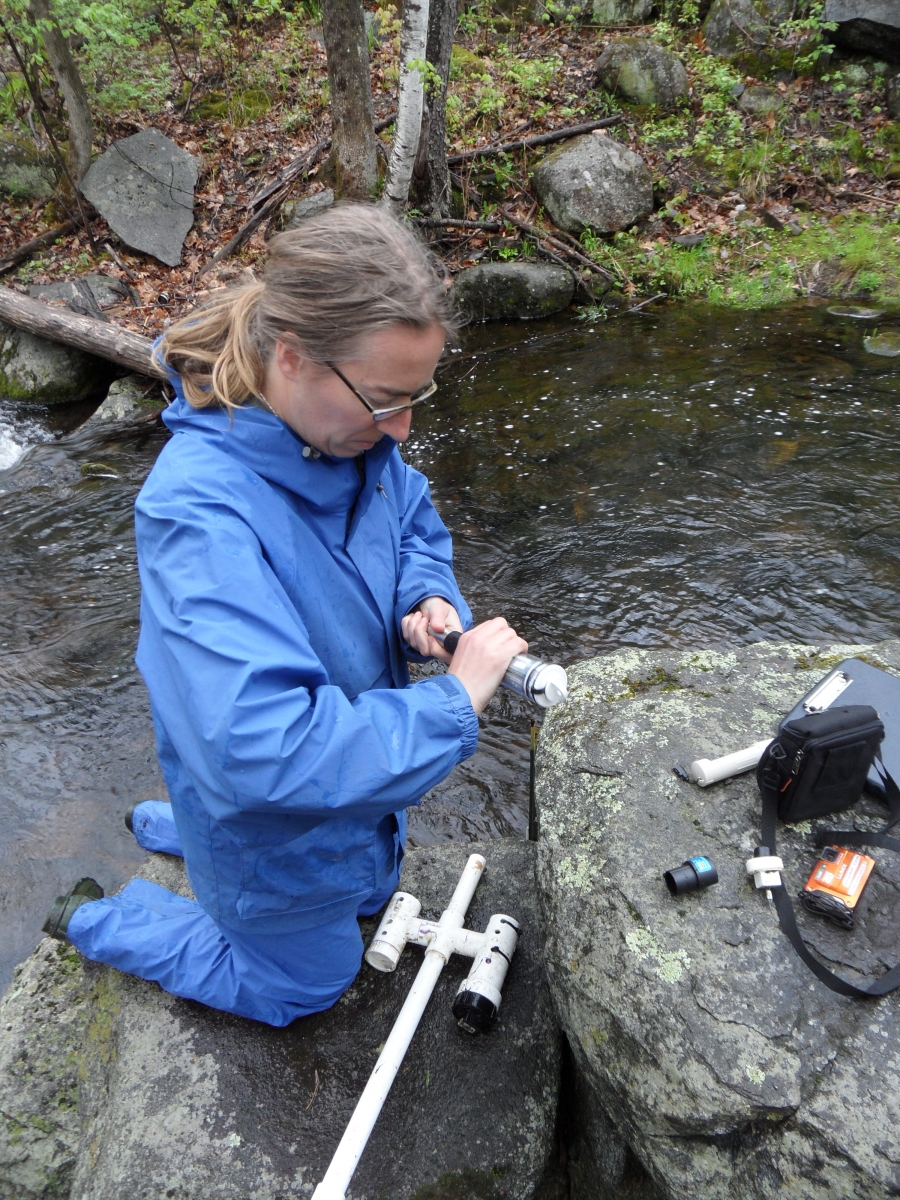Community partnerships make it possible to detect the effects of road salt on Squam Lake
Does the salt applied to icy roads in winter affect the quality of water in our lakes and ponds? Squam Lake, the third largest lake in New Hampshire, is ranked highly for water quality so it was deemed a good choice to collect accurate baseline data on the impact of road salt.
A partnership between NH EPSCoR researchers at Plymouth State University’s Center for the Environment and the nonprofit Squam Lakes Association (SLA) supported a three-year monitoring project at two sites downstream of state roads treated with salt in the winter.

“How is it affecting Squam?” says Rebecca Hanson, SLA director of conservation. “What’s the possible conflict between public safety and ecosystem services?”
In 2012, instruments were placed in a brook in Belknap Woods, downhill from Route 25B in Center Harbor, and in Mill Brook, an outlet of White Oak Pond in Holderness; both flow into Squam Lake. The results were surprising. The Belknap Woods brook in a forested tract had higher levels of conductivity, an indication of chloride in the water, than did Mill Brook which flows under Route 3, a road with much more traffic.
Mark Green, an associate professor of hydrology at PSU, has an explanation. Because Mill Brook drains White Oak Pond, the flow of water is substantially more than that of a brook draining a forested area, so the chloride from road salt was diluted. The data indicates that with annual flushing from spring melt, the pond and lake will recover. “Over-salting does not have to have a long-term impact” if the amount of salt can be reduced by more careful application, he says.
It is good science to repeat an experiment under different conditions. So this year the SLA, in partnership with the White Oak Pond Watershed Association, deployed instruments both upstream and downstream of a road in three sites with varying land characteristics, to compare the conductivity, and therefore salinity, of water before the road crossing and afterward.
Meanwhile, Hanson says, the town of Holderness sent members of its road crew to a state-sponsored training course to improve salt application techniques and address the concerns of the pond association.
“Road salt is not a winter phenomenon,” says Green. “It’s in the groundwater all year long.” Data collected by volunteers in NH EPSCoR’s citizen scientist networks at monitoring sites throughout the state showed a spike in conductivity in August when streams are low and are replenished by groundwater.
The next step is to deploy the sensors systematically above and below road crossings in several sites throughout the state to develop data that can be used to improve road maintenance practices.
EPSCoR water sensors record temperature, conductivity, and water height in several locations in NH. For more information, email Mark Green.
